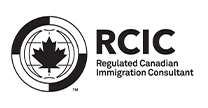Update: September 29, 2025
Immigration, Refugees and Citizenship Canada (IRCC) has officially closed the “Applicants Not Working in Canada” stream under the Home Care Worker Pilot (HCWP). This closure affects caregivers who were hoping to apply for permanent residence (PR) from outside Canada.
The update appeared on IRCC’s official website on September 29, 2025, marking the stream as “Closed”-even though it was never opened to applications since the program’s inception.
What Was the Home Care Worker Pilot (HCWP)?
The Home Care Worker Pilot is one of Canada’s immigration programs designed to offer a pathway to permanent residence for caregivers, both in Canada and abroad. It replaced the earlier Home Child Care Provider and Home Support Worker Pilots.
When first introduced, the program was expected to include two intakes:
-
In-Canada applicants (those already working as caregivers in Canada)
-
Applicants not working in Canada (those applying from outside Canada)
However, while the in-Canada stream opened as planned, the overseas intake never launched. After years of uncertainty, IRCC has now officially confirmed that the international stream will not open at all.
Why Did IRCC Close the Stream?
IRCC has not issued an official statement explaining the decision, but data from its Minister Transition Binder (September 2025) suggests several key reasons behind the closure:
1. Large Application Backlog
As of September 11, 2025, IRCC was managing a backlog of 34,400 applications across all caregiver programs.
The department expects to process only 14% (approximately 4,816) of these applications this year.
2. Processing Targets Already Near Limit
From January to September 2025, about 4,200 caregivers have already received permanent residency. This leaves room for only around 600 more approvals before reaching the year’s quota.
3. Focus on Applicants in Canada
Recent immigration trends show IRCC’s focus on helping temporary residents already in Canada transition to PR. This includes:
-
Frequent Canadian Experience Class (CEC) draws in Express Entry.
-
A federal directive asking provinces to give 75% of PNP nominations to in-Canada applicants.
Together, these indicate a clear shift toward prioritizing those who are already contributing to the Canadian workforce.
What Does This Mean for Caregivers Outside Canada?
While this closure ends one potential pathway, other immigration options remain open for caregivers and healthcare professionals abroad.
✅ 1. Express Entry – Healthcare Category
Caregivers who work as Nurse Aides, Orderlies, or Patient Service Associates (NOC 33102) are eligible under the Healthcare and Social Services category of Express Entry.
-
The most recent draw under this category had a Comprehensive Ranking System (CRS) cutoff score of 470.
-
Applicants must still meet eligibility for one of the core Express Entry programs: Federal Skilled Worker (FSW), Federal Skilled Trades (FST), or Canadian Experience Class (CEC).
✅ 2. Provincial Nominee Programs (PNPs)
Many provinces continue to invite caregivers under their own immigration programs. These include:
-
Manitoba PNP (Skilled Worker Overseas Stream)
-
Ontario Immigrant Nominee Program (Employer Job Offer: Foreign Worker Stream)
-
New Brunswick PNP (Priority Occupations Stream) – only NOC 33102, 44101, and 42202 are eligible
-
Newfoundland and Labrador PNP (Skilled Worker Category)
⚠️ Note: Home Child Care Providers (NOC 44100) are not eligible under New Brunswick’s stream.
These PNPs often provide nomination opportunities to applicants who have valid job offers, relevant work experience, or ties to the province.
Immigration Levels Context
Under Canada’s 2025 Immigration Levels Plan, the total target for all economic pilot programs (including caregivers) is 10,920 new permanent residents.
This total covers:
-
Agri-Food Pilot
-
Economic Mobility Pathways Pilot
-
Rural and Francophone Community Pilots
-
Caregiver Pilots (HCWP and others)
Because this number includes both principal applicants and their dependents, the space for caregiver applicants is limited, which likely influenced IRCC’s decision to reduce new intakes.
What’s Next for Caregivers?
The closure of the international caregiver PR pathway signals IRCC’s broader strategy to:
-
Manage existing backlogs
-
Streamline application processing
-
Support caregivers who are already working in Canada
However, caregivers abroad still have viable alternatives through federal and provincial immigration programs — especially in healthcare-related occupations.
If you are currently outside Canada and wish to work or settle as a caregiver, it is recommended to:
-
Explore Express Entry eligibility under NOC 33102 or related roles.
-
Check PNP openings in provinces that continue to invite caregivers.
-
Stay updated with future IRCC pilot announcements for 2026 and beyond.
Final Thoughts
While the closure of the overseas caregiver PR stream is disappointing for many, Canada continues to value skilled care professionals. The focus now lies in integrating and supporting caregivers who are already making a difference within Canada.
For those abroad, pathways remain open – they just require a different strategy.
Need Help?
If you’re a caregiver or healthcare worker planning to move to Canada, our team at Guide Me Immigration can help you assess your eligibility, guide you through the Express Entry system, and explore PNP opportunities suited to your profile.
Book a consultation today to discover your best immigration pathway.







